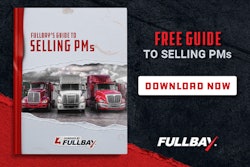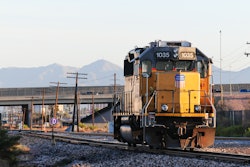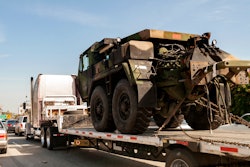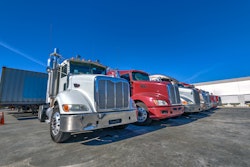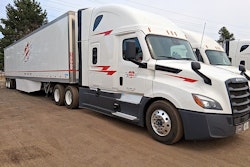Cargo theft continues to be a growing threat for businesses, insurers and supply chains. CargoNet reported that more than $63 million in goods were stolen in the first quarter of 2025 alone, with an additional $7.5 million lost over the Fourth of July holiday. The average stolen load now exceeds $200,000.
In the last 18 months, the National Insurance Crime Bureau (NICB), which supports Customs and Border Protection in preventing insurance fraud and crime, has assisted in more than 240 cargo crime investigations and more than 70 recoveries valued at nearly $40 million.
“When manufacturers are forced to account for stolen merchandise, the costs are passed along to the consumer,” said NICB President and CEO David J. Glawe.
Federal actions to combat organized crime
A bipartisan push is underway in Congress to crack down on organized retail and cargo theft. Senators Chuck Grassley (R-Iowa) and Catherine Cortez Masto (D-Nev.) have reintroduced the “Combating Organized Retail Crime Act of 2025 (CORCA),” targeting the networks behind large-scale theft. The bill would coordinate law enforcement action and investigations.
During a July committee hearing, four expert witnesses described the challenges in tackling organized retail crime and stressed how CORCA would give authorities tools to improve coordination and response.
“IMC Logistics has seen cargo theft of intermodal volumes rise from five incidents in 2021 to 876 incidents in 2024. That is a 17,520% increase in just three years,” Donna Lemm, chief strategy officer of IMC Logistics, said in her testimony.
A major obstacle they noted is the lack of cross-state collaboration once stolen merchandise moves across state lines.
The cost beyond the load
Cargo theft isn’t tracked by the U.S. government, and reporting is voluntary, so most data comes from private companies. Only about one in 10 cargo thefts is reported, yet that’s enough to spot trends, said Scott Cornell, vice president of transportation and crime and theft specialist for Travelers, during a recent webinar hosted by Travelers Institute.
The top target for thieves isn’t high-end electronics, but food and beverages, Cornell said. These goods are easy to steal, difficult to trace and always in demand.
There’s also a connection on inflation, Cornell pointed out, as thieves will target certain commodities that are impacted by inflation, with food and beverage being one of those.
Keith Lewis, vice president of operations at Verisk CargoNet, added that thieves adapt quickly to market shifts. For example, during pandemic shortages, household goods were a prime target. Lately, theft of electronics and copper has been on the rise.
The significant uptick in copper is typically due to anxiety with tariffs and a demand for copper products, said Todd Wolfe, general counsel at Arrive Logistics.
“Criminals are very good at knowing what the market wants, and that’s what they’ll steal,” Lewis said. "So, if they flood the market with food products, the demand for those comes down."
Double brokers, international crime rings and cybercrime
Double brokering – wherein criminals pose as legitimate brokers, hire a real trucking company, then divert the load by altering the bill of lading – are common, Cornell said. Small mom-and-pop trucking companies and owner operators are typically unwitting participants, and many have provided crucial leads to law enforcement.
Strategic theft methods, often involving cybercrime using fictitious pickups, double-broker scams and identity theft, have grown from about 5% to 40% of all incidents in just a few years, according to CargoNet data.
While hotspots still include ports and rail yards, theft attempts from international crime rings are rising, originating from countries like India, Canada, Uzbekistan and Mexico.
“We went from small regional crews that had a small or a limited ability to move freight, to these massive rings who are now moving freight internationally, and they’re supplying an international appetite,” Cornell said. “In essence, they can’t steal enough. They have plenty of customers.”
Criminals use tactics like phishing emails to steal load board credentials, enabling them to book and steal legitimate shipments before detection.
Prevention is a multi-layered approach
Beyond the direct financial hit, theft can damage customer relationships, increase insurance costs and premiums, strain internal resources and harm a company’s reputation.
“If that freight gets lost, we need to pay the shipper the value of that freight, whether it’s through insurance, whether it’s through pursuing the carrier because the loss was the carrier’s fault, or whether it’s through means. We’re generally responsible for paying the shipper back for the freight that they lost,” said Wolfe.
Panelists agreed that a layered security strategy and employee education is critical.
Companies should develop role-specific security protocols, reinforce the notion that “freight at rest is freight at risk,” and combine driver best practices with physical security measures and integrated technology such as covert tracking devices and multi-factor identification tactics.
Tabletop drills (simulated thefts) twice a year is important to ensure staff know their roles in a crisis, Cornell said, and prompt reporting to law enforcement can significantly improve the chances of recovery.



